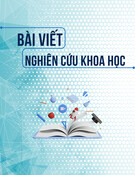
86 Vo Thi Thu Hien
FROM PLOT OF THE LITTLE MERMAID TO THE “STORY” VERSIONS IN
FILM ADAPTATIONS (FROM AN INTERTEXTUAL PERSPECTIVE)
TỪ CỐT TRUYỆN NÀNG TIÊN CÁ ĐẾN CÁC PHIÊN BẢN “CÂU CHUYỆN”
PHIM CHUYỂN THỂ (TỪ GÓC NHÌN LIÊN VĂN BẢN)
Vo Thi Thu Hien*
The University of Danang - University of Science and Education, Vietnam
*Corresponding author: vtthiencv@gmail.com
(Received: March 25, 2025; Revised: April 17, 2025; Accepted: April 18, 2025)
DOI: 10.31130/ud-jst.2025.157
Abstract - Literature and cinema are two art forms that share a
strong and interconnected relationship. This is because they
both originated from earlier forms of artistic expression and in
every film, there are elements of painting, music, and, most
notably, literature. To gain a clearer understanding of this
relationship, the application of intertextual theory to analyze
texts provides a convenient perspective. In this paper, we aim
to clarify the process of literature-to-film adaptation,
specifically focusing on Andersen’s fairy tale The Little
Mermaid and its various film adaptations by Disney, through
the lens of plot. Thus, we seek to demonstrate that intertextual
theory is an open framework, one that is not confined to
literature but can also be applied to the analysis of various other
art forms.
Tóm tắt - Văn học và điện ảnh là hai loại hình nghệ thuật luôn có
mối quan hệ bền chặt và tương quan lẫn nhau. Bởi lẽ, vì là loại
hình nghệ thuật được ra đời từ nền tảng của các loại hình có trước,
trong mỗi bộ phim điều mang dáng dấp của hội họa hay âm nhạc
và đặc biệt nhất là văn học. Để có thể tiếp nhận một cách sáng tỏ
về mối tương quan đó, việc lựa chọn lý thuyết liên văn bản để soi
chiếu văn bản là một góc nhìn khá thuận tiện. Trong khuôn khổ
bài viết, chúng tôi muốn làm rõ quá trình chuyển dịch văn học -
điện ảnh, cụ thể là trường hợp truyện cổ tích Nàng tiên cá của
Andersen và các phiên bản phim chuyển thể của Disney thông
qua khía cạnh cốt truyện. Từ đây, chúng tôi muốn chứng minh
rằng: lý thuyết liên văn bản là một góc nhìn mở, nó không chỉ bị
giới hạn trong khuôn khổ văn chương mà còn có thể áp dụng để
phân tích nhiều loại hình nghệ thuật khác nhau.
Key words - intertextuality; The Little Mermaid; literature-to-
film adaption; plot; Disney’s film.
Từ khóa - Liên văn bản; Nàng tiên cá; chuyển thể văn học - điện
ảnh; cốt truyện; phim của Disney.
1. Introduction
As a “late-born” art form, cinema has always
maintained close connections with pre-existing art forms,
particularly literature. However, accurately perceiving the
relationship between cinema and literature is not a simple
matter, especially when film adaptations of literary works
have traditionally been regarded as derivative products of
secondary importance. Currently, with intertextual theory,
the concept of adaptation has undergone significant
changes. The adaptation process is now viewed as a
process of (re)signification or (re)creation from pre-
existing material to establish a new artistic code system,
facilitating code transformation and interaction between
the two art forms of literature and cinema.
Intertextuality is a theory proposed in the late 1960s by
Bulgarian critic Julia Kristeva. “Every text is an intertext”
- Kristeva developed this theory based on the philosophical
foundations of Ferdinand de Saussure and Mikhail
Bakhtin. They established the semantic nature of language
and the potential for expanding word meanings in their
numerous studies, asserting that language never exists
independently but always reflects and parallels human
culture and customs. Therefore, every sentence, word, and
utterance in the present inherently contains shadows of
what came before, whether the subject intends this or not.
Intertextual research examines the correlations between the
subject and its surrounding elements. This approach
involves reading a text through the lens of other texts,
thereby illuminating the resonance of ideas and aesthetic
qualities within the text, while simultaneously enabling
parallel reading to discover similarities and differences
between texts [1]. In Vietnam, since the late 20th century,
Hoang Trinh has garnered critical acclaim in the field of
literary criticism with his seminal work “From Semiotics
to Poetics”. This contribution earned him the first Ho Chi
Minh Prize in 1995 [2]. In 2019, Nguyen Van Thuan
published the textbook “Intertextuality Theory” [1]
Additionally, regarding the issue of literary-to-cinematic
adaptation from the perspective of intertextual theory, we
recognize “Literary-Cinematic Adaptation: An Intertextual
Study” by Le Thi Duong as a representative scholarly work
in the field [3].
Building upon studies applying intertextual reading to
decode literary works and their cinematic adaptations, we
are particularly interested in Disney's ongoing trend of
remaking classic animated films into live-action versions,
such as Aladdin (2019), The Lion King (2019), Mulan
(2020), Pinocchio (2022), and The Little Mermaid (2023).
Hans Christian Andersen's fairy tale “The Little Mermaid”
has arguably been an essential part of childhood for
millions of children worldwide. As an animation studio
that frequently draws material from fairy tales, Disney has
granted The Little Mermaid a significant position with two
adapted films (the animated version in 1989 and the live-

ISSN 1859-1531 - TẠP CHÍ KHOA HỌC VÀ CÔNG NGHỆ - ĐẠI HỌC ĐÀ NẴNG, VOL. 23, NO. 4, 2025 87
action version in 2023), both warmly received by
audiences globally. Several scholarly articles have
compared the various story and film versions, such as Tran
Le Hoa Tranh's “From Andersen’s Mermaid to Walt
Disney’s Mermaid” [4], Zalfa Melanie Putri’s
“Comparison in animated films The Little Mermaid (1989)
and versions adaptation live-action The Little Mermaid
(2023)” [5], and more extensively, Pham Hoang Mai’s
dissertation “The Art of Character Building in Walt Disney
Animated Films” [6].
In this paper, we analyze the adaptation process from
the original plot of The Little Mermaid to its two film
versions through an intertextual perspective, thereby
contributing to the exploration of the transition from the
verbal code of literature to the visual code of cinema.
Throughout our research, we employ a combination of
methodologies: intertextual research methods, analysis-
synthesis methods, and typological research methods.
2. Adaptation of The Little Mermaid's plot from
literature to cinema through an intertextual
perspective
2.1. Film narrative development following the classic
linear structure
Most Walt Disney films are adapted from fairy tales,
and The Little Mermaid is no exception, being narrated
according to the “pyramid” structure in a linear sequence.
Both the story and films begin with the protagonist’s goal,
followed by complications and obstacles the main
character encounters, and confrontations with the
antagonist. Finally, there is a resolution leading to a happy
ending.
In Hans Christian Andersen’s fairy tale The Little
Mermaid, the little mermaid is the youngest daughter of the
Sea King. She lives with her father, grandmother, and six
mermaid sisters in a magnificent palace at the bottom of
the ocean. The author describes her as a strange, quiet, and
contemplative child. Her dream is to visit the land, to
observe and love the world above the surface and all the
humans living there. When the mermaid turns fifteen, she
is permitted to rise to the water's surface to glimpse the
human world. Her eyes inadvertently fall upon a prince on
a sailing ship under the romantic night sky adorned with
glowing fireworks. Suddenly, a storm strikes, causing the
ship to rock violently amidst fierce waves until it breaks in
half, endangering the prince and his crew. The little
mermaid dives deep into the water, rescues the prince, and
brings him safely to shore. By morning, when the storm
subsides, she has given him a kiss on the forehead. From
that moment, her longing to live on land intensifies.
Hearing her wish, the sea witch entices the little mermaid
to trade her melodious voice for human legs and the
possibility of an immortal soul. These legs would be
extraordinarily beautiful, but each step on land would feel
like a thousand knives stabbing her feet. Once transformed
into a human, she could never return to being a mermaid.
She must win the prince's love to fully become human and
gain an immortal soul; otherwise, on the morning after the
prince marries another woman, the little mermaid would
dissolve into sea foam. The price for this gamble is steep,
yet she accepts it. After drinking the witch's magical
potion, the little mermaid transforms into a human with
fair, delicate legs and small feet like any young maiden.
However, she has no clothes, so she covers herself with her
long, thick hair. The prince and mermaid become
seemingly inseparable companions, yet the prince
ultimately chooses to marry someone else - a princess from
a neighboring kingdom whom he believes rescued him on
the stormy night. If this marriage proceeds, the little
mermaid will dissolve into sea foam, but her sisters find a
way to help her. By taking the knife provided by the sea
witch and stabbing the prince’s heart, she could regrow her
tail and return to live with her family in the palace.
However, the little mermaid decides to preserve her love
for the prince, choosing death for herself. Rather than
dissolving as expected, she surprisingly transforms into an
immortal spirit. This is considered a happy ending as the
little mermaid achieves her goal: becoming human and
obtaining an immortal soul [7].
In Disney’s two film versions, the mermaid Ariel is not
depicted with a grandmother figure from her past. The
story begins with her burning desire to step into the
beautiful world above the surface, to freely run, jump, and
sing. The moment Ariel sees the prince, she falls deeply in
love with him, intensifying her yearning to reach the shore.
Despite her father Triton’s prejudice that humans are
dangerous creatures, Ariel remains determined to find her
way to land. Following the sea witch Ursula's enticement,
Ariel trades her crystal-clear voice for human legs.
However, she must agree to a peculiar contract: she must
receive a kiss of true love from the prince by sunset on the
third day, or else she must return to being a mermaid and
become Ursula’s possession. In the film versions, there is
no neighboring princess character preventing Ariel from
marrying the prince. Instead, Ursula uses Ariel’s stolen
voice to bewitch the prince into marrying her, thereby
easily preventing Ariel from fulfilling the contract.
Eventually, the witch achieves her goal: capturing the
mermaid and even Triton’s soul when he tries to save his
daughter. However, the human prince bravely jumps into
the water to attack the sea witch, rescuing the girl he loves
despite Ariel being in her mermaid form. The young couple
struggles desperately against the witch. In the end, good
triumphs over evil - they successfully destroy the wicked
witch Ursula, and Ariel lives happily ever after with the
prince in human form.
If Aristotle stated that plots in drama or literature
typically have three parts - Beginning, Development,
Climax and Conclusion - then films similarly have three
acts. In the opening, filmmakers establish the setting and
introduce the protagonist and character system. Here, the
main character forms a new goal or ideal, creating curiosity
for the audience about the character’s journey to
accomplish this mission. For instance, in both the fairy tale
and the two film adaptations, the little mermaid (Ariel)
shares the same objective: to become human and win the
prince’s love. After approximately one-third of the content,
the film enters the Development stage - the portion

88 Vo Thi Thu Hien
occupying the most time and content. Here, conflicts
repeatedly follow a pattern of resolution followed by
escalation to stronger conflicts. In The Little Mermaid, the
mermaid’s process of becoming human and winning the
prince's love is far from easy. “Obstacles” continuously
appear, making her goal difficult to achieve: from losing
her voice to become human, to the prince mistakenly
believing someone else rescued him during the storm, to
the sea witch successfully hindering her goals. In the final
part - Climax and Conclusion - the story and films resolve
conflicts and build to climaxes in very different ways. First,
the deadline given by the witch for the mermaid to obtain
the prince’s love kiss differs. In one version, it’s dawn on
the third day, after which the mermaid would dissolve into
sea foam if unsuccessful; in the other, it's sunset on the
third day, after which Ariel would become a soul serving
the witch, forever unable to return to either mermaid or
human form. In the original story, the author denies the
mermaid her wish - she fails to fulfill her agreement with
the witch before the deadline. However, because of her
kind heart, one of her two wishes comes true: the little
mermaid transforms into an immortal soul capable of
helping people. When adapting the story, filmmakers
changed the ending: although Ariel doesn’t receive the kiss
before the deadline and Ursula captures her soul, with help
from the prince and King Triton, she returns to human
form, regains her voice, and lives happily with the prince
forever.
Disney chose to maintain the linear storytelling as a
safe choice to attract the “ready-made” audience from fairy
tales. Although this storytelling approach is quite
traditional, it doesn’t diminish the appeal or “drawing
power” of either film. The chronological sequence helps
both readers and viewers easily follow the story, making
both the tale and films accessible to children and adults
alike.
2.2. The perfect happy ending
In the original text, Hans Christian Andersen gave the
little mermaid a positive ending: she obtains an immortal
soul. Although she doesn’t win the prince's love, her kind
heart and self-sacrifice for love earn her an immortal soul
for 300 years instead of dissolving into sea foam like other
merfolk. This story conveys the value of sacrifice and
unconditional love. The little mermaid willingly gives up
her voice, abandons the deep sea and her family, and
endures pain to become human - all out of her
unconditional love for the prince. The Little Mermaid also
demonstrates acceptance and letting go. When she
discovers that the prince loves someone else, rather than
becoming jealous like many other girls might, she accepts
the truth and releases this love. Despite her sisters’ advice
to kill the prince to return to mermaid form, the little girl
chooses to protect that beautiful love, accepting her fate to
dissolve into sea foam. Overall, Andersen’s fairy tale isn't
as rosy as many other fairy tales. Beyond celebrating
beautiful love, the story reflects the complex aspects of life.
Joy, pain, disappointment, and happiness are emotional
ranges everyone must experience to mature, including the
little mermaid. She doesn’t have the “halo” of a typical
protagonist; she constantly struggles to achieve what she
wants, and there are things she simply cannot obtain no
matter how hard she tries.
Although both film versions of The Little Mermaid by
Walt Disney remain fairly faithful to the original story, the
endings were significantly altered. In both the 1989
animated version and the live-action remake, the
conclusion shows Ariel becoming human and finding true
love with the human prince. Ariel and Eric’s wedding
receives approval and blessings from both tribes. However,
the ending in the live-action version is deeper and conveys
more messages compared to the purely fairy-tale happy
ending of the 1989 animated version. In the live-action
film, during her son’s important wedding day, Eric's
mother takes Ariel's hand and advises her: “Our two worlds
have misunderstood each other for too long. Your wedding
marks a new beginning. Go to sea and change the world”.
This dialogue is not only a mother's advice to her child but
also represents hope for an open future. Eric and Ariel’s
story continues beyond the wedding - they still have a
journey full of hardships and challenges waiting for them.
Additionally, the 2023 version addresses the issue of
harmonious coexistence between the mermaid tribe and
humans.
In general, the conclusion of the 1989 version of The
Little Mermaid conveyed a message about women’s
freedom to determine their own lives, asserting their right
to pursue love and happiness on their own terms.
Furthermore, unlike the original text where the mermaid
alone accepts self-sacrifice for love, the film adaptation
portrays both Ariel and the prince fighting together to
protect each other without regard for their own safety. They
love and trust each other unconditionally; even when
tempted and deceived by the witch Ursula, the prince
steadfastly believes in Ariel as the true love of his life.
Building upon this foundation, the 2023 cinematic
adaptation further incorporates ideals of racial diversity
and ethnic respect through the casting of a Black female
actress for Ariel’s role, while Ariel’s sisters also represent
women from various regions across the world. As
previously mentioned, the prince’s mother’s statement
functions as an appeal for peaceful coexistence among the
world’s diverse races and ethnicities.
2.3. Encountering familiar motifs again
As an author specializing in fairy tales, Hans Christian
Andersen frequently drew upon materials from folk
literature. Consequently, familiar motifs often appear
throughout his works. Adapting fairy tales has been a
particular strength of Disney, as the studio has consistently
achieved success with productions such as “Snow White
and the Seven Dwarfs”, “Alice in Wonderland”,
“Cinderella”, and others. As a result, this film studio has
become quite familiar with and proficient in constructing
the motifs that regularly appear in folk tales.
2.3.1. The motif of good triumphing over evil
In Hans Christian Andersen’s original The Little
Mermaid text, the relationship between the witch and the
mermaid is fundamentally not one of confrontation or a

ISSN 1859-1531 - TẠP CHÍ KHOA HỌC VÀ CÔNG NGHỆ - ĐẠI HỌC ĐÀ NẴNG, VOL. 23, NO. 4, 2025 89
struggle between good and evil. Andersen constructed the
witch as a character with a gift-giving or supportive
function. Her appearance serves to help the mermaid fulfill
her wish to become human; she also warns the mermaid
about what she must sacrifice and the risks the small
mermaid might face in this journey. Even when the
mermaid is about to fail to fulfill their agreement before the
deadline, the witch provides her with a contingency plan.
Through the plea of her sisters, the witch gives them a
knife, saying this is the only opportunity to save her. If the
mermaid stabs the prince's heart with this knife, she could
avoid dissolving into sea foam.
However, in the adaptation, the filmmakers changed the
relationship between these two characters, dividing them
into good and evil camps, and transferring the supportive
function to the father king - a character whose function in
the original story was rather insignificant. Disney
thoroughly transformed the witch into a villainous
character. In the film, this character is depicted as an
octopus with a human upper body. Taking advantage of
animation’s strengths, the 1989 version freely exaggerated
this character's appearance and personality to the point of
absurdity. The witch Ursula, with her two henchmen -
electric eels - constantly seeks to lure naive merfolk into her
schemes. With sweet temptations about what merfolk could
achieve by becoming human, she ensures that when they
fail to fulfill their agreements, their souls become entirely
hers. Her enticement of young Ariel is also part of a plot to
reclaim the power currently held by Triton, her brother.
At times, this character also has moments of
foolishness, which further enhances her absurd and
grotesque nature. For instance, while disguised as the girl
who rescued the prince, during a song revealing her plan,
Ursula allows the seagull Scuttle to overhear her.
Consequently, her scheme is exposed. This plot element
serves as a stepping stone to propel the story toward its
climax, leading to the film's conclusion. The final third of
the film is the phase where the protagonists unite against
the antagonist - Ursula. The humorous elements added in
this section help mock the villain’s cruelty and the
foolishness of her plan. Examples include scenes of Ursula
struggling with the protagonists over the shell necklace
containing Ariel’s voice, with assistance from the dog
Max. Clearly, Disney has made the witch’s falls and body
movements extremely comical.
Although a villainous character, Ursula also serves as a
functional character. The difficulties she creates for Ariel
during her quest to fulfill the agreement drive the story’s
development. Simultaneously, these challenges reveal the
personalities and qualities of the characters. The presence
of the antagonist helps elevate the protagonist.
Consequently, the main character’s victory becomes
logical and convincing to viewers. Disney’s transformation
of this character's function has made the film fresher and
more interesting, attracting both new audiences and those
already familiar with Andersen’s story.
2.3.2. The animal-to-human transformation motif
The motif of animals transforming into humans has
long appeared in mythological stories and folk tales. We
can mention the god Zeus in Greek mythology. Despite
being an all-powerful, mighty deity, his wife was jealous
by nature, so Zeus often transformed into a swan to pursue
Leda - the queen of Sparta. In Vietnam, there are also
stories containing this motif. In the “Wind God”
mythology, the Wind God's child was punished for
mischievously creating storms by being transformed into a
mustard plant that signals wind. In summary, this is a fairly
common motif that appears widely in traditional stories
across the world.
Unlike the good-triumphing-over-evil motif, the
animal-to-human transformation motif appears in both the
original story and film adaptations. In The Little Mermaid,
Andersen used this motif based on folk literature traditions,
and it has become the famous, distinctive feature of this
story. The image of a half-human, half-fish girl trading her
voice to become human in search of love has become
extremely popular. Beyond Disney, countless artistic
works worldwide have drawn inspiration from this detail.
Films featuring mermaids mostly incorporate this motif,
such as: “The Legend of the Blue Sea” produced by South
Korea in 2017, “The Lure” produced by Poland in 2015,
“The Mermaid” produced by China in 2016, and others.
In The Little Mermaid, the animal-to-human
transformation motif expresses the mermaid’s desire to
explore and integrate into the human world. Having a
human body serves as a disguise that helps the mermaid
easily interact and blend into human life without being
noticed, criticized, or even hunted by humans. This human
disguise is that of a beautiful girl, with new legs that are
long and straight - legs that every girl would desire. This is
a perfect form that helps the mermaid captivate the prince
at first sight, giving her an advantage in fulfilling her
agreement to obtain a kiss of true love from the man she
loves. However, many researchers question: Why are
characters who transform into humans typically female?
To explain this, we need to look back at the principle of the
Maternal in mythology [8, p.12]. In both Eastern and
Western religious cultures, women symbolize origins and
fertility. Throughout societal development, human society
gradually eliminated many of the rights and roles of
women. In a patriarchal society, all decision-making power
belongs to men, while women serve only as emotional
support for “heroes”. Sometimes, women are even
associated with loss and disaster when warriors become too
enamored with beauty. In The Little Mermaid and its two
film adaptations of the same name, artists have restored
women’s rights, at least the right to their own lives.
Although the story's setting in both the tale and films is a
patriarchal society - where the king, the highest authority,
is male - the mermaid still freely pursues her life’s love,
something forbidden to women in patriarchal societies.
Yet, the mermaid chooses to defy her father king, seeking
her true happiness in that strange land above, actively
deciding her own fate regardless of consequences.
At the end of her journey to achieve her life's goal, the
mermaid in each version receives a deserved ending. This
shows how the animal-to-human transformation motif
expresses a view of the happy human world, while also

90 Vo Thi Thu Hien
demonstrating the artist's progressive perspective on
women finding love and protecting their own interests.
Additionally, the animal-to-human transformation
motif appears not only in protagonists but also in
antagonists. Primarily, antagonists transform into humans
to execute their schemes or prevent protagonists from
achieving their goals. The witch character (Ursula) initially
appears as an ugly octopus. However, to prevent Ariel from
fulfilling her agreement, she transforms into a beautiful
girl, possessing Ariel’s heaven-given melodious voice,
thereby enticing the prince that she was the one who
rescued him. Nevertheless, the filmmakers’ intention in
developing this transformation motif for this character is
not extensive. As mentioned, Disney added this plot
element to escalate the story’s conflict to its climax, driving
the narrative toward its conclusion [8].
3. Conclusion
Based on what has been presented previously, we can
broadly observe the process of literature-to-film adaptation
in terms of plot structure from the perspective of
intertextuality theory. Examining the adaptation case of
The Little Mermaid fairy tale, the filmmakers built their
cinematic versions on the artistic foundation of the fairy
tale. Although presented as films, they still maintain the
structural characteristics and motifs of fairy tales. In this
article, we have summarized the following points:
First, Disney’s animated film The Little Mermaid and
the live-action film of the same name have preserved the
linear plot structure of the original text. Conflicts and
important plot elements have been constructed according
to the “pyramid” model. However, the filmmakers did not
maintain all the story details as in Andersen’s version but
changed certain elements to suit the genre and the tastes of
film audiences.
Second, not only were some details from the fairy tale
transformed during filmmaking, but even the ending was
constructed by the filmmakers in a direction and spirit very
different from the original text. While the fairy tale’s
ending conveyed a message about kindness and sublime
love, the endings of both film adaptations contain much
more. They represent a change in perspective regarding
women’s self-determination of their lives, or even
beautiful messages about harmonious coexistence between
different ethnic groups in the world.
Third, the motifs appearing in the various versions of
The Little Mermaid are familiar motifs from folk literature
works. However, whether these motifs were applied
randomly by the artists or not, they all carry their own
intentions and messages.
REFERENCES
[1] N. V. Thuan, Intertextuality Theory Curriculum, Hue: Hue
University Publishing House, 2019.
[2] T. Hoang, From Semiotics to Poetics, Da Nang: Da Nang Publishing
House, 1997, p. 59.
[3] L. T. Duong, Adaptation from Literature to Cinema (an intertextual
study), Hanoi: Social Sciences Publishing House, 2016.
[4] T. L. H. Tranh, “From Andersen’s Little Mermaid to Disney’s Little
Mermaid”, Faculty of Literature and Linguistics – VNU-HCM,
2009. [Online]. Available: https://khoavanhoc-
ngonngu.edu.vn/nghien-cuu/van-hoc-nuoc-ngoai-va-van-hoc-so-
sanh/433-t-nang-tien-ca-ca-hans-christian-andersen-n-nang-tien-ca-
ca-walt-disney.html [Accessed: April 10, 2025].
[5] Z. M. Putri, Comparison in Animated Films The Little Mermaid
(1989) and Versions Adaptation Live-Action The Little Mermaid
(2023), Syntax Idea, vol. 5, no. 7, pp. 844–854, 2023.
[6] H. M. Pham, The Art of Character Construction in Walt Disney
Animated Feature Films, Ph.D. dissertation, Hanoi University of
Theatre and Cinema, Hanoi, Vietnam, 2021.
[7] H. C. Andersen, Andersen’s Fairy Tales, Translated by M. Chuong,
Hanoi: Literature Publishing House, 2022.
[8] H. T. T. Duong, Some Typical Motifs in Liaozhai Zhiyi by Pu
Songling from the Perspective of Mythology, CTU Journal of
Science, vol. 46, pp. 7-14, 2016.


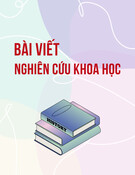



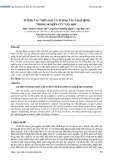
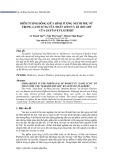
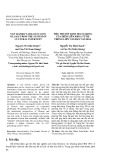
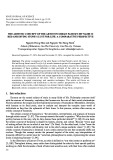
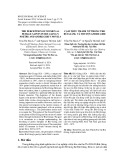
![Bộ câu hỏi trắc nghiệm Văn bản tiếng Việt [chuẩn nhất]](https://cdn.tailieu.vn/images/document/thumbnail/2025/20251127/thuynhung051106@gmail.com/135x160/24021764296609.jpg)
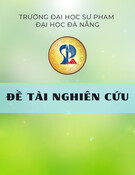

![Bài giảng Ngôn ngữ học đối chiếu Nguyễn Ngọc Chinh [PDF]](https://cdn.tailieu.vn/images/document/thumbnail/2025/20251101/vovu03/135x160/7471762139652.jpg)

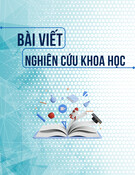
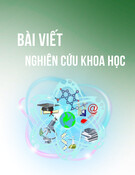

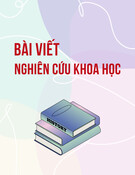
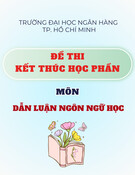

![Ngân hàng câu hỏi môn Tiếng Việt thực hành [chuẩn nhất]](https://cdn.tailieu.vn/images/document/thumbnail/2025/20251003/kimphuong1001/135x160/21861759464951.jpg)
![Bài giảng Văn học phương Tây và Mỹ Latinh [Tập hợp]](https://cdn.tailieu.vn/images/document/thumbnail/2025/20251003/kimphuong1001/135x160/31341759476045.jpg)

